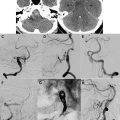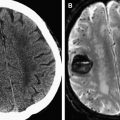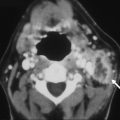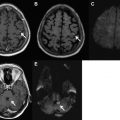Recognizing typical midface fracture injuries and describing the imaging findings that are relevant to the maxillofacial surgeon are important. Particular attention should be paid to findings that potentially result in significant cosmetic or functional complications. Radiologists should evaluate facial fractures in multiple planes with coronal and sagittal reformats, which are especially helpful for horizontally oriented facial fractures, such as injuries to the orbital floor and the hard palate. 3-D images can also facilitate a broader understanding of the fracture impact on facial width, height, and projection and are useful for an overview of more complex fracture patterns that involve multiple facial bones.
Maxillofacial fractures are most commonly caused by traffic accidents, assaults, falls, and sports-related injuries. Studies on the epidemiology and characterization of facial trauma have shown that the specific etiology and incidence of fracture types vary extensively by geographic location. Even within the same geographic region, radiologists may encounter different types of facial trauma, depending on their individual practice setting (eg, level 1 trauma center, community hospital, outpatient clinic, or academic center). Regardless of practice type, nasal and orbital fractures are common, and radiologists should be familiar with the imaging findings of these injuries and other common maxillofacial fractures that are relevant to clinical management.
Maxillofacial trauma can be broadly divided into fractures involving the (1) upper face, including the frontal bone and supraorbital rim; (2) midface, including nasal, orbital, maxillary, and zygomatic injuries, in addition to more complex fracture patterns, such as Le Fort fractures; and (3) lower face, including the mandible. Midface fractures are the most common injuries, accounting for approximately 70% of all maxillofacial fractures, according to one large review, followed by mandible fractures (25%) and frontal or supraorbital fractures (5%). Given their high incidence in craniofacial trauma, midface fractures are the focus of this content.
Basic approach to facial fractures
The plastic, oral-maxillofacial, or otolaryngologist/head and neck surgeon examining a patient with a facial fracture is broadly interested in two things: form and function. Does the fracture cause a significant cosmetic deformity that requires repair (form)? And, does the fracture pattern cause injury to an adjacent anatomic structure that disrupts normal function and creates symptoms for the patient (function)?
In conjunction with a clinical examination, thin-section noncontrast CT is the best imaging modality to answer these questions. Imaging review should include studying the thin-section axial source images in both bone and soft tissue algorithm as well as coronal and sagittal multiplanar reformations. The reformatted images are particularly useful for assessing fractures oriented in the axial plane, such as orbital floor fractures and Le Fort 1, or floating palate, fractures, which are best appreciated in the coronal plane. Additional 3-D reformations of facial fractures provide a big-picture, overall rendering of facial skeletal alignment that is more difficult to appreciate on the axial images, and this greatly aids surgeons in evaluating cosmetic deformity. The impact of the fracture on facial width, height, and projection is more easily assessed on 3-D than 2-D imaging, and obtaining 3-D reformations in all patients with facial fractures is routine at the authors’ institution.
Although addressing the issues of form and function with respect to facial fractures is important, radiologists should also carefully review soft tissue windows for signs of injury to the brain or globe. Intracranial hemorrhage or globe injury necessitates immediate neurosurgical or ophthalmologic consultation and may alter the timing of surgery. Many maxillofacial surgeons have experienced evaluating bony structures on CT for purposes of planning their operative approach, but they may not be familiar with the imaging manifestations of intracranial and orbital soft tissue injury.
Nasal and nasal-septal complex fractures
Nasal and nasal-septal complex fractures are the most common of all facial fractures because the prominent, central position of the nose renders it susceptible to injury and the thin nasal bones require less force to fracture than other facial bones. The paired nasal bones articulate with each other in the midline at the top of the nose as well as with the frontal bone and the frontal process of the maxilla ( Fig. 1 ). The nasal septum is comprised of a cartilaginous portion anteriorly and bony portion posteriorly, with the perpendicular plate of the ethmoid making up the superior portion of the bony septum and the vomer making up the inferior portion.
The perichondrium that lines the cartilaginous nasal septum provides nutrients and oxygen to the nasal septum, which has no other source of blood supply. If a septal hematoma develops between the perichondrium and septal cartilage, stripping the latter of its blood supply, the septal cartilage may undergo necrosis with resultant infection and/or saddle nose deformity. For this reason, septal hematomas must be recognized and evacuated promptly. This is an uncommon entity that is more common in children. It is usually diagnosed clinically, with no role for imaging to the authors’ knowledge.
In the context of nasal fractures, imaging can provide an accurate description of the fracture, such as whether or not it is unilateral or bilateral, is comminuted, or involves an associated septal fracture ( Fig. 2 ). Imaging may also identify complications, such as fracture extension into the anterior skull base and cribiform plate that may result in anosmia or cerebrospinal fluid leak. Suspicion of a nasal fracture in and of itself is not an indication for facial imaging; imaging is reserved for cases in which other facial fractures are suspected.
Clinical evaluation, not the imaging appearance, remains the mainstay for treatment decisions with respect to nasal fractures. Although there is no clear consensus on the optimal treatment of nasal fractures, patients who sustain a nasal fracture may undergo a trial of closed reduction within 3 hours of injury or within 3 to 10 days post injury. Open treatment of nasal fractures is usually reserved for patients with persistent nasal deformity or nasal obstruction after the acute treatment period
Nasal and nasal-septal complex fractures
Nasal and nasal-septal complex fractures are the most common of all facial fractures because the prominent, central position of the nose renders it susceptible to injury and the thin nasal bones require less force to fracture than other facial bones. The paired nasal bones articulate with each other in the midline at the top of the nose as well as with the frontal bone and the frontal process of the maxilla ( Fig. 1 ). The nasal septum is comprised of a cartilaginous portion anteriorly and bony portion posteriorly, with the perpendicular plate of the ethmoid making up the superior portion of the bony septum and the vomer making up the inferior portion.
The perichondrium that lines the cartilaginous nasal septum provides nutrients and oxygen to the nasal septum, which has no other source of blood supply. If a septal hematoma develops between the perichondrium and septal cartilage, stripping the latter of its blood supply, the septal cartilage may undergo necrosis with resultant infection and/or saddle nose deformity. For this reason, septal hematomas must be recognized and evacuated promptly. This is an uncommon entity that is more common in children. It is usually diagnosed clinically, with no role for imaging to the authors’ knowledge.
In the context of nasal fractures, imaging can provide an accurate description of the fracture, such as whether or not it is unilateral or bilateral, is comminuted, or involves an associated septal fracture ( Fig. 2 ). Imaging may also identify complications, such as fracture extension into the anterior skull base and cribiform plate that may result in anosmia or cerebrospinal fluid leak. Suspicion of a nasal fracture in and of itself is not an indication for facial imaging; imaging is reserved for cases in which other facial fractures are suspected.
Clinical evaluation, not the imaging appearance, remains the mainstay for treatment decisions with respect to nasal fractures. Although there is no clear consensus on the optimal treatment of nasal fractures, patients who sustain a nasal fracture may undergo a trial of closed reduction within 3 hours of injury or within 3 to 10 days post injury. Open treatment of nasal fractures is usually reserved for patients with persistent nasal deformity or nasal obstruction after the acute treatment period
Orbital fractures
The superior, inferior, medial, and lateral orbital rims comprise the anteriorly palpable, circumferential bony framework encircling the globe. The corresponding orbital walls project posteriorly and converge toward the orbital apex, rendering the orbit a conical structure. The inferior and medial orbital walls are particularly delicate and vulnerable to fracture after blunt trauma to the eye.
Fractures of the orbit can be characterized as blow-out or blow-in depending on whether or not the fracture fragments extend beyond the orbit into adjacent structures, such as the maxillary or ethmoid sinus (blow-out) or buckle into the orbit (blow-in). Blow-out fractures, particularly of the weak inferior and medial orbital walls, are more common than blow-in injuries, which are rare and are not discussed in this review. Pure blow-out or blow-in fractures involve only the orbital walls and leave the orbital rims intact. Complex orbital injuries, such as the zygomaticomaxillary complex (ZMC), naso-orbito-ethmoidal (NOE), or Le Fort fractures, however, may fracture both the orbital walls and rims.
Blow-out Fractures
Fractures of the orbital floor are more common than fractures of the medial wall (lamina papyracea), and superior blow-out fractures are exceedingly uncommon. There are several important complications of form and function that may follow orbital blow-out fractures, and all of these must be considered at the time of CT interpretation.
The most significant cosmetic complication is the development of enophthalmos due to a fracture that enlarges the volume of the bony orbit, allowing the globe to sink posteriorly ( Fig. 3 ). It is generally thought that enophthalmos greater than 2 mm creates a significant cosmetic deformity, but this can be difficult to determine at the time of acute fracture because the enophthalmos may not develop immediately after trauma and because the examination is impaired by acute periorbital swelling and edema.
There is great clinical interest in using CT features, such as the size of the fracture defect and/or enlargement of orbital volume after injury to predict which patients will develop enophthalmos and thus require surgical repair of their fracture. Unfortunately, this is not straightforward given the conical shape of the orbit. The methods used in the literature to estimate the size of fracture defect vary widely and are not easily performed in a busy clinical setting because they require the use of computer-aided algorithms or mathematical calculations. The general surgical recommendation is that large orbital fracture defects (>50% of the orbital floor) should undergo operative repair rather than conservative management because of the high risk of subsequent enophthalmos. Surgery is usually undertaken within 2 weeks of the acute trauma, because this allows time for the initial edema and hemorrhage to subside but it is before significant fibrosis and scarring typically occurs. At the authors’ institution, visual estimation rather than a quantitative area calculation of the orbital floor fracture defect on CT generally guides surgical management.
An important functional complication of the blow-out fracture is diplopia caused by entrapment of an extraocular muscle and/or its fascial attachment in the fracture defect. Entrapment is a clinical, not radiologic, diagnosis that is made on forced duction testing. Muscle entrapment may also be difficult to distinguish on clinical examination, however, due to extraocular muscle edema or hemorrhage, which can also limit ocular motility and cause diplopia. CT can be helpful if there is evidence of muscle or surrounding soft tissue herniation into the fracture defect ( Fig. 4 ). The size and position of the inferior and medial rectus muscles (and their surrounding fat) should always be described in fractures of the orbital floor and medial wall, respectively.
CT may underestimate the extent of muscle entrapment if only a few fibers of the muscle or its fascial attachment to the periorbita are incarcerated or if the fracture defect is very small, as in the case of many trapdoor floor fractures that typically occur in the pediatric population. In this injury, the greater elasticity in the orbital floor of young patients is thought to allow the fractured, buckled orbital floor to spring back nearly to its normal position and ensnare orbital contents that are not always readily appreciated on CT. Trapdoor fractures are linear and hinged medially. Careful evaluation of the orbital floor on coronal imaging is important in children with trauma to the orbit, because trapdoor fractures can be subtle and early diagnosis and treatment are critical to good outcome ( Fig. 5 ). Children with trapdoor orbital floor fractures and acute incarceration of the inferior rectus muscle can present as a white-eyed blow-out fracture with few signs of periorbital swelling and bruising, making the clinical diagnosis a difficult one. Early diagnosis is crucial, however, because surgical repair within the first few days of injury is necessary to avoid the oculocardiac reflex and permanent motility restriction resulting from muscle ischemia and necrosis.
Infraorbital anesthesia is another potential functional complication of orbital floor blow-out fractures if the fracture extends through the infraorbital foramen containing the infraorbital nerve (see Fig. 4 ). Anesthesia of the cheek and upper gum is typically temporary but may last up to 6 months or longer and even permanently in severe cases. Imaging disruption of the infraorbital foramen is not an indication for surgical intervention. Table 1 summarizes the relevant imaging features to describe in cases of orbital blow-out fractures.
| Relevant Imaging Findings to Report | Clinical Significance |
|---|---|
| Size of fracture defect (>50% of orbital floor?) | Predicts enophthalmos >50% defect is a relative indication for surgery |
| Grossly abnormal globe position (enophthalmos) | Cosmetically disfiguring Indication for surgical repair |
| Extraocular muscle or soft tissue herniation | Risk of entrapment and diplopia Entrapment indicates surgical repair |
| Involvement of infraorbital foramen (for orbital floor fractures) | Risk of cheek, gum anesthesia |
| Trapdoor fracture in children (for orbital floor fractures) | Easy to miss on imaging (indication for early surgical repair) |
| Globe injury or orbital hematoma | Risk of blindness (indication for urgent ophthalmologic consult) |
Stay updated, free articles. Join our Telegram channel

Full access? Get Clinical Tree







